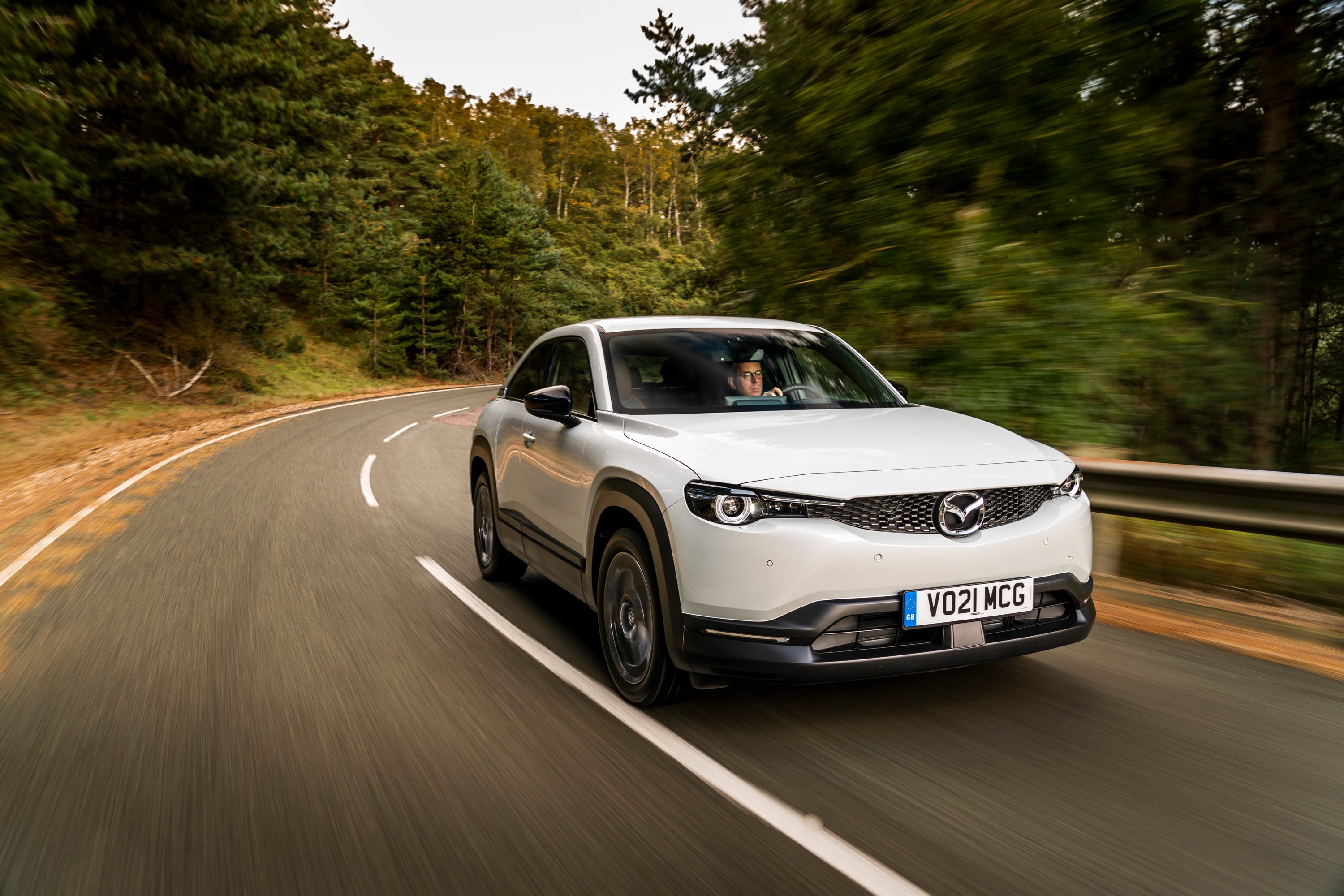Car review: A funky electric newcomer, but ‘range anxiety’ may pull the plug on the Mazda MX-30
Mazda’s first pure plug-in battery-powered production model is strikingly styled, especially the doors, though Sean O’Grady remains dubious over its obvious drawback

I’ve always been a great fan of Mazda. The company did, after all, reincarnate the traditional, small soft top roadster when it launched the MX-5 back in the 1980s, as well as a range of high-revving elegant and dependable family cars, and a string of crazy rotary-engined fun machines, where the traditional pistons going up and down are replaced by a triangular drive that goes round and round, and at much more furious revs. That tended to be less durable than the usual sort of internal combustion engine, and it also lumbered rotary-powered Mazdas with very high fuel consumption. Which was a shame.
So they no longer make cars with rotary motors, but they do now make a car with an electric motor, the MX-30. It’s Mazda’s first pure plug-in battery-powered production model, and, apart from that radical change, it is very much as you’d expect a Mazda to be. So it is well-built, exquisitely finished, should prove faithful in service and has an especially driver-friendly cabin.
The top of the range GT Sport Tech version I was lucky enough to try out was well-equipped with two nice big touchscreens and a “heads up” display, which projects your speed, satnav and so on onto the windscreen, as if it was in the middle distance of your eyeline. It’s good for safety, as well as quite fun. There’s a vegan option for the seating, and laminated cork is used on some of the surfaces – attractive and soft to the touch. That innovative touch is apparently inspired by Mazda’s centenary celebrations, as the firm has its origins in the cork trade, believe it or not.
The styling too is quite striking. It doesn’t really conform to the usual Mazda mix of swathes and curves, and is a bit of a mashup of chunky SUV, egg-shaped Nineties hatchback and very contemporary ultra-narrow treatment of the headlights and grille. It’s not the most aerodynamic of designs, at a glance, but it’s sort of practical, being built on the platform of the Mazda CX-30, the company’s compact SUV.
The piece de resistance is the doors. The front ones open very wide, and are, as usual, hinged at the front; the rear have concealed handles and are hinged to the rear, and, with no central pillar they open to reveal a wide open living space with easy access. This is just as well, being cheeky, because otherwise you’d have great difficulty getting into the back. The trick doors were last fitted on the short-lived Mazda RX-8 sports saloon, a rotary-engined future classic which you can pick up cheap right now, though of course it’s a little fragile.
The spec
Mazda MX-30
Price: £30,045 (as tested; range starts at £25,545, inc grant)
Engine capacity: Single electric motor powered by 35.5kWh battery
Power: 143 bhp
Top speed: 87 mph
0-60 mph: 9.7 secs
Fuel economy: 142 mpg equiv
CO2 emissions: 0
There’s actually a bit more room in the back and in the boot than there might be because Mazda has opted to build its electric pioneer with a relatively small battery, towards the bottom of the usual range offered by manufacturers these days – a single 35.5 kWh unit. In practical terms, that’s bad news though, because it limits the Mazda to a range of about 124 miles in real-world driving conditions. I can testify that that diminishes very rapidly if you are tempted to make the most of the low-speed performance, which I’m afraid I was.
A gentle false engine note adds to the fun and does not detract from the extremely civilised ride; motorway speeds are close to serene. The car’s relatively heavy weight, perhaps relating to its CX-30 origins, of 1.6 tonnes does take the edge off its higher speed acceleration, however, and, where legal, it’s all over at 87mph.
By the standards of the competition, that 124-mile range looks mean indeed, though of course the Mazda can be charged rapidly (say 40 minutes on a fast charger), and Mazda says that customers can cope with it. It is right about that in the sense that few of us often make longer journeys and most electric car users simply recharge overnight at home, inexpensively. Still, with plenty of electric alternatives, notably the Kia and Hyundai models, offering a range more than double that of the Mazda, and for the same sort of money, you really do have to fancy the MX-30’s oddball features to justify the choice. I fear “range anxiety” may get the better of this funky newcomer. There’s a possibility, though, they say, of a compact rotary petrol engine being allied with the electric motor to push the range much higher; the best of both worlds, maybe.
Subscribe to Independent Premium to bookmark this article
Want to bookmark your favourite articles and stories to read or reference later? Start your Independent Premium subscription today.

Join our commenting forum
Join thought-provoking conversations, follow other Independent readers and see their replies